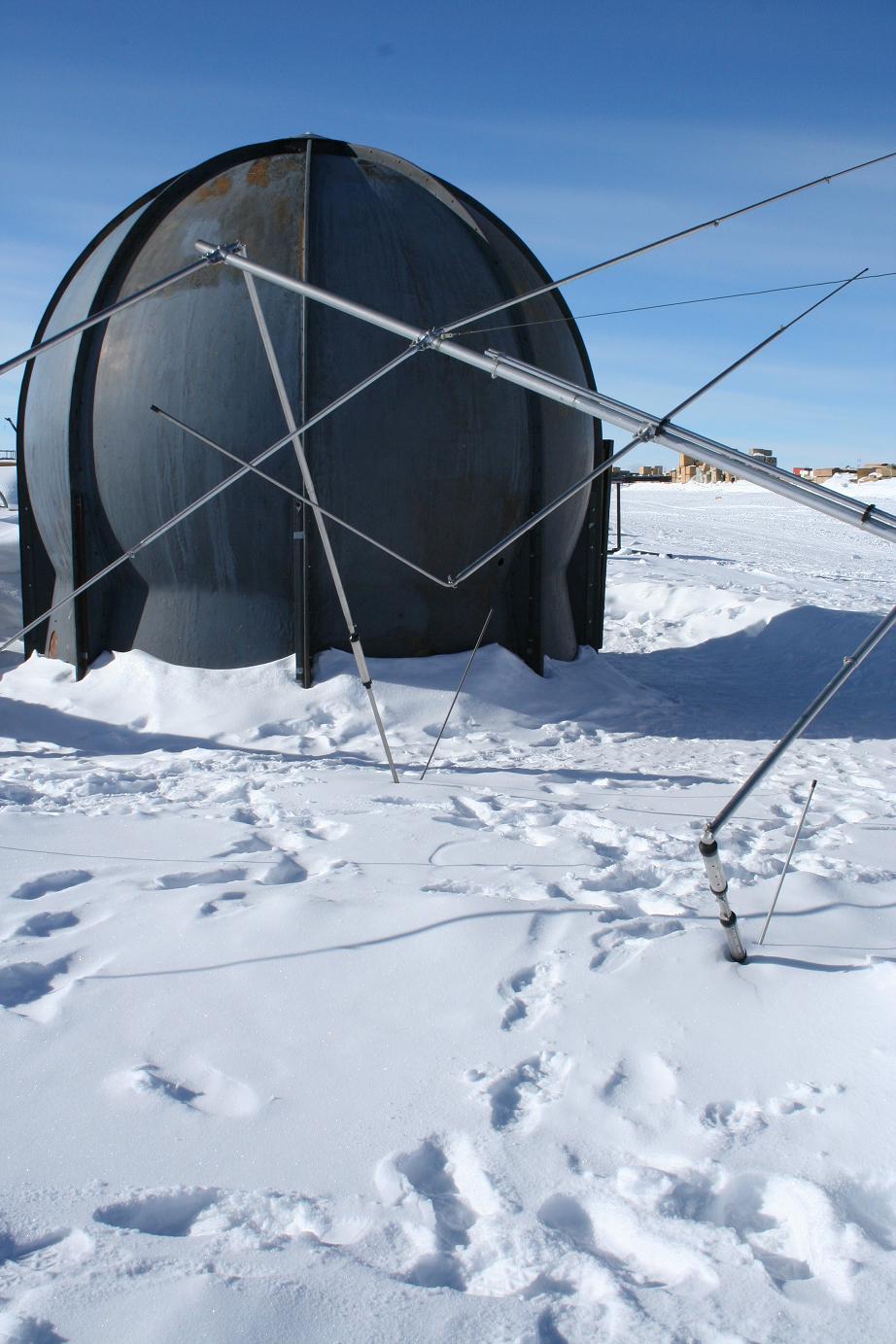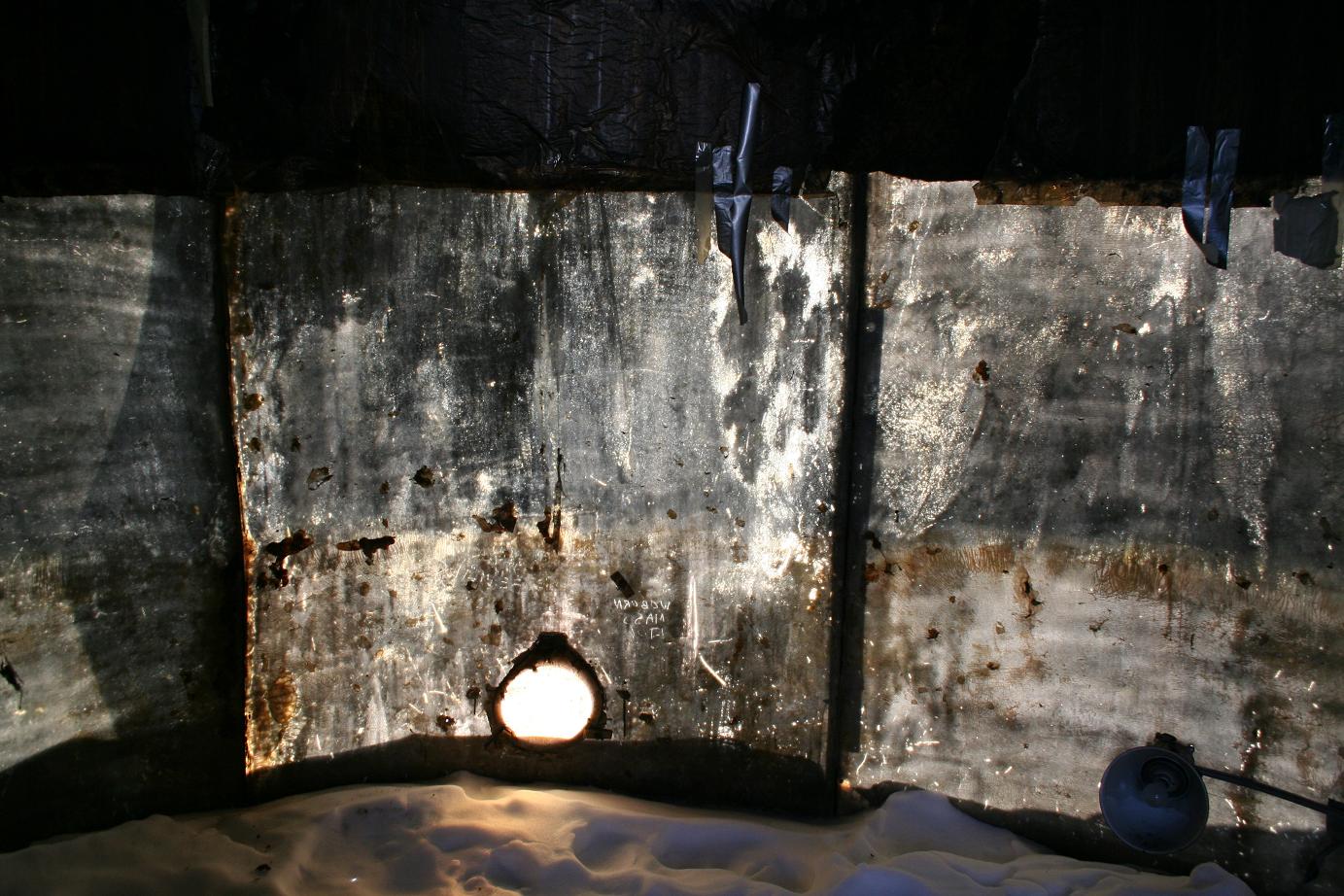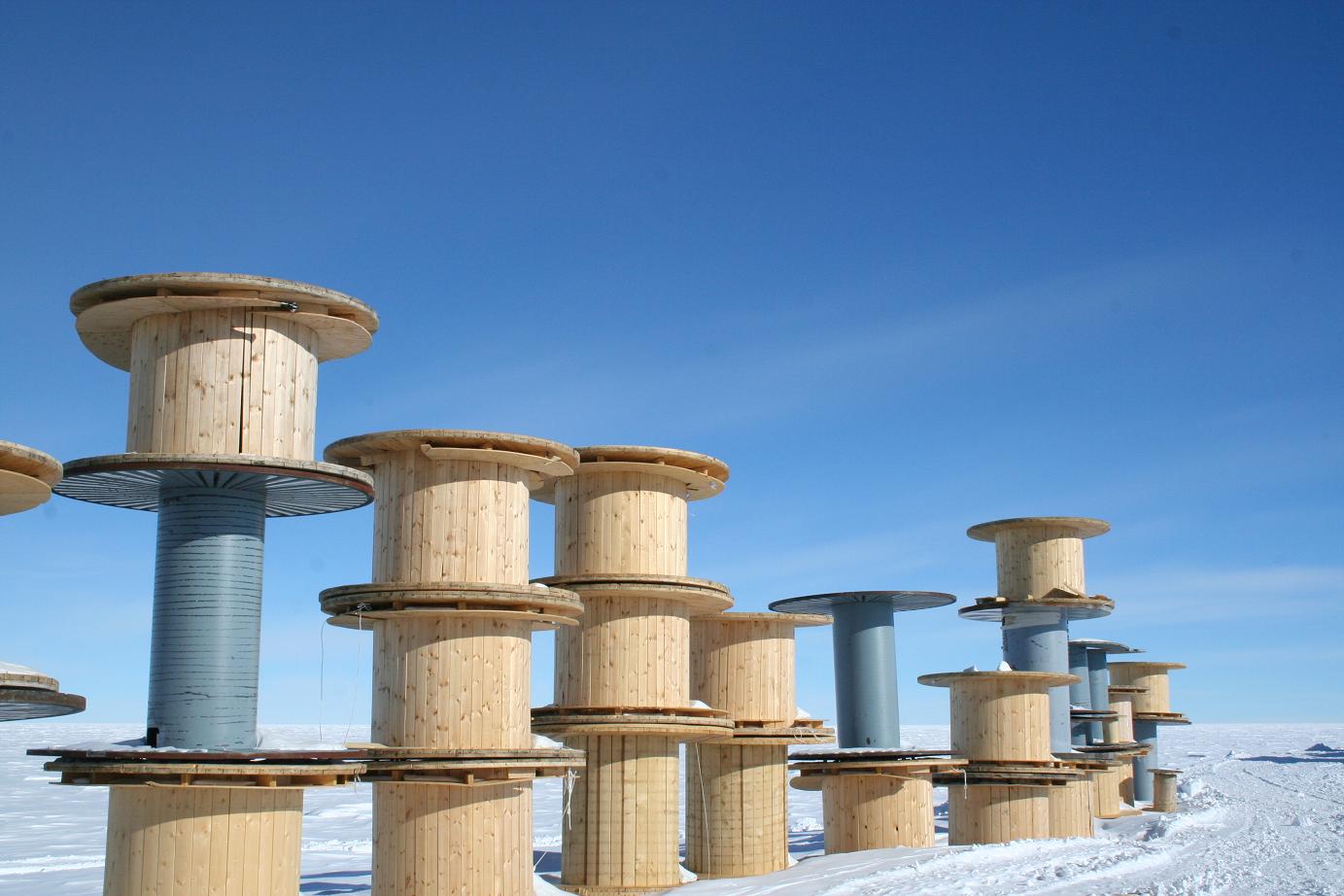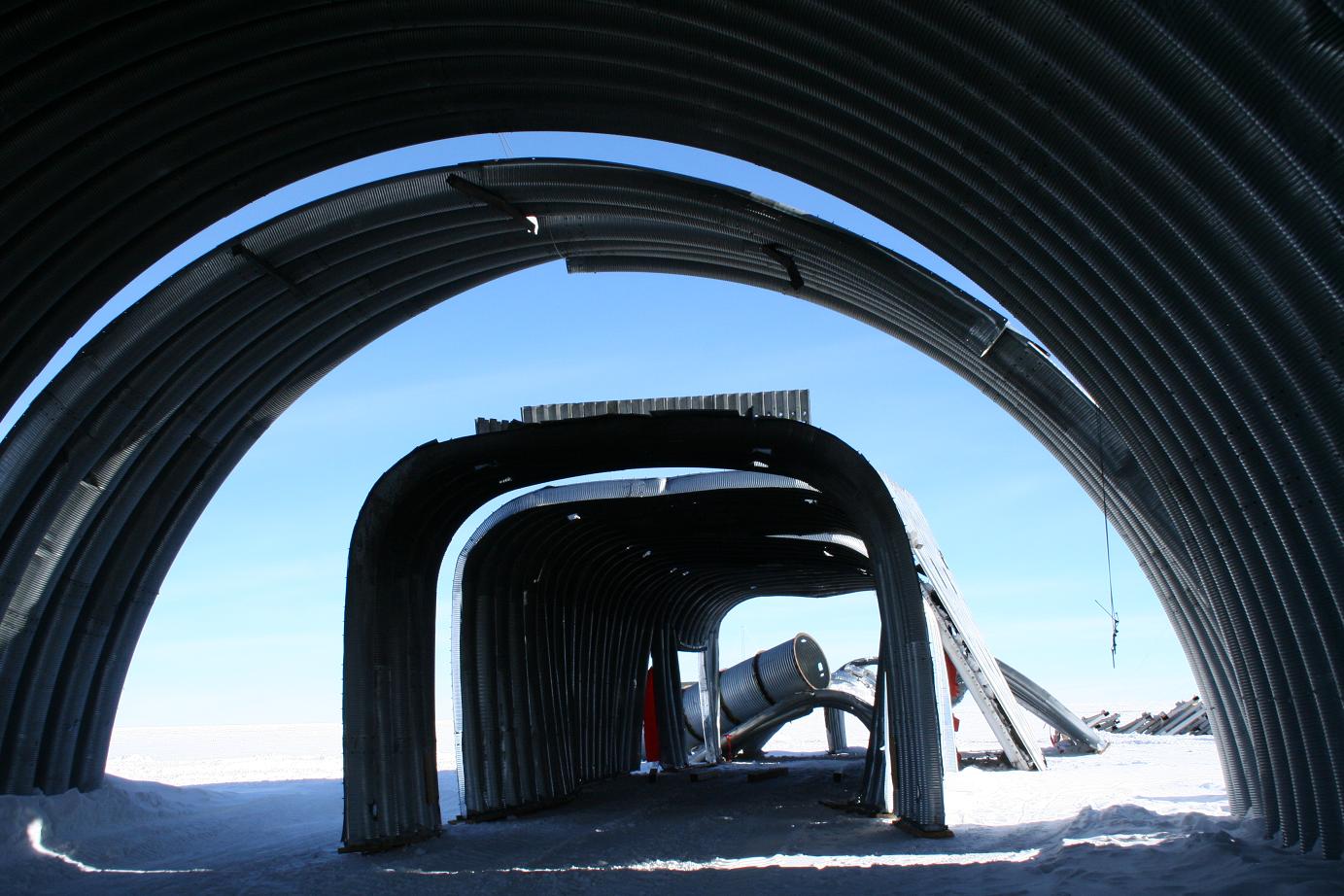A Monumental Effort
Today, what I should be writing about is the formal dedication ceremony for the new station. This morning, the flag was taken down once and for all from the top of the old dome, the previous South Pole Station, and transferred to a shiny new flagpole at the front of the new station. Distinguished guests were flown in for the ceremony and tours, including congressional respresentatives and the highest members of the NSF. Of course, since I’m on night shift, all of this took place while I was asleep. I could have stayed up for part of it, but I’ve been exhausted and I simply crashed. And then I slept in for the first time in weeks, which also meant that I missed the big dinner and most of the party to celebrate the formal opening of the new station.
The new station has been under construction for years, and for a newcomer like myself, it already feels like it’s been here forever. I went into the dome last year, but already by that time the main living quarters were dismantled and mostly it was being used to store office supplies and snack foods in big racks criss-crossing the well-packed snow floor inside. For many people here, though, that dome was once home. Sometimes for the better part of many years, for the really dedicated members of the U.S. Antarctic Program who have wintered over many times. The work to build the new, modernized station has been intense, and today’s formal dedication was the culmination of a massive, monumental effort. I could tell it was very sentimental for many members of the community.
For me, the official ceremonies do not have the personal significance that they do to people who have been involved in the South Pole Station for five years, a decade, or even two. But I am not without a good deal of awe for their accomplishments. Ironically, what made me most aware of the sheer scale of the project to keep a station going year-round at the South Pole, and most aware of the history and the people who have kept it going, was a recent tour of the grittier sides of station activites. Last week I went for a wander behind the station, looking in on all of the trade shops (carpenters, plumbers, electricians), the storage berms, and the out-of-the-way spots where old construction materials and decommissioned scientific equipment are stored, awaiting shipment back to the states.
New storage facilities are being built, as part of modernizing the station. But for years, elevated stretches of packed snow behind the station have been used to store construction materials, frozen food, and scraps of anything that might bear reuse in the future. This part of the station can feel like an endless sea of cardboard boxes, stacked pallets, and scrap metal.
Old scientific and communications materials are stored here, as well as anything else that breaks or becomes obsolete. It is all gradually on its way out, on return flights back to the U.S. But while it waits, exposed to the bare Antarctic elements, it conveys to the wandering observer a real sense of the history of this place and the unique mixture of basic life support services with technology and cutting-edge science that has always characterized daily life here.
Below are a few more pictures from my tour. A couple of these are of an old radome, an enclosure built to protect communications antennas. There are also stacks of giant empty spools, segments of arches used for storage facilities, and aisles of construction materials. All evidence of the massive, monumental scale of maintaining a research station here in all of its forms over the years.

An old randome– an enclosure built to protect communications antennas.

Inside randome.

Spoolhenge

Segments of arches used for storage facilities.

 No comments
No comments 







